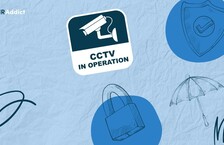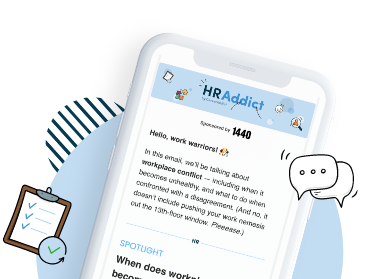This guest post is written by Sarah Fales from Jobtrees.
A recent Jobtrees workforce survey found that a staggering 86% of employees aren't comfortable with employers monitoring their clicks and keystrokes. The line between genuinely helpful oversight and flat-out invasive spying is getting blurrier by the day, and it’s putting a huge strain on workplace trust.
Employee monitoring or surveillance has always been used as one of the most efficient ways to measure remote productivity. It typically includes keystroke logging, webcam checks, and tracking browser history. The tools promise easy data, but they often come at a steep cost: the foundation of workplace trust. For HR leaders, this isn’t just about technology—it’s a problem that can impact retention, engagement, and your employer brand in a highly competitive talent market.
TABLE OF CONTENTS
The problem with digital monitoring
Increased hybrid and work-from-home models created a need for companies to seek out new ways to track employee accountability from a distance.
Digital monitoring is an easy way to collect activity-based data such as the number of hours logged, emails sent, active time online, and frequency of mouse/trackpad activity. This type of data collection usually just oversimplifies performance. These metrics alone simply can't capture the whole picture, especially the aspects that actually drive success, like creativity, collaboration, or problem-solving.
In today’s data-driven world, it’s easy for leaders to focus too much on numbers and forget the importance of trust.
The message sent across
When we're continuously monitoring minute details like keystrokes, browser usage, and every other tiny performance metric, we're unfortunately sending one loud and clear message to our people: "We don't trust you."
Mistrust can squash HR goals with spiked stress levels, lowered employee engagement, and increased turnover rates.
A 2025 OECD report reveals that workers using high levels of electronic monitoring report higher stress and anxiety, lower job satisfaction, and eroded trust. This issue impacts more than just your HR department. It actively harms your company's brand. In a world where employer reputation spreads at the speed of light, the perception of an "always watching" culture can severely hurt recruitment and retention.
Balancing ethics, law, and trust
Workplace surveillance sits right in the middle of this messy spot where ethics, law, and leadership collide.
In some jurisdictions, employee consent is legally required. But being legal is not the same as being ethical. Honestly, the moral cost of secretly tracking our people can easily be much greater than any financial benefit we think we're gaining.
Transparency is non-negotiable if we're going to use any data collection process. Our teams have the right to know what data is being collected, how it’s being used, and why it's necessary. If we don’t communicate clearly, we risk losing trust and facing more serious problems.
Focus on outcome-based measurements
We need to shift our focus from activity-based tracking to outcome-based measurement. By measuring success through results rather than hours or clicks, employees feel empowered to take ownership of their time and work effectively. Encourage employees to actively share their progress, challenges, and insights, instead of relying on passively collected data that only tells part of the story.
Technology should be used to enable, not enforce. Analytics tools can provide valuable insights into workflows and collaboration challenges without monitoring individual behavior. The key difference lies in intent. These tools should exist to help employees perform better, not to spy on them.
HR solutions to build trust while driving performance
So, what’s next? HR leaders are in the best position to close the gap between business goals and employee needs. The key is helping leaders understand how their teams work and turning policy language into something people actually connect with.
Here are five ways to start rebuilding trust:
1. Make monitoring policies crystal clear
Don't just email out a new rule. Be transparent by explaining the intent behind any monitoring process. Instead of just enforcing policies, host an in-person or online event to facilitate discussion. Explain exactly why a tool is being implemented, like "we are measuring team bottlenecks, not individual lunch breaks." Provide an accessible FAQ detailing exactly which metrics are and are not being tracked. For example, tracking application usage data, but not webcam footage.
When the why is clear and the boundaries are explicit, employees see the tool as a way to improve the system, not a way to spy on them, which instantly lowers anxiety.
2. Treat employee data with respect
Handle employee data in a way that respects their privacy. Establish a "data use pledge" that leadership signs, committing to only using monitoring data for its stated purpose (like resource allocation) and explicitly banning its use for punitive measures, unless it's a serious policy violation. This also means we only collect the necessary data and delete it after a set period.
A formal pledge demonstrates that the company is accountable to its values, not just to maximizing its data collection, protecting the company from reputational damage.
3. Equip leaders to manage by outcomes
We have to train managers to lead with empathy to truly foster trust. Implement a mandatory training on "Managing by Outcomes, Not Observation." This teaches managers to stop asking, "tell me what you did every hour," and start asking outcome-focused questions like, "what roadblocks can I remove so you can hit your project milestone next week?" Focus first on results and support, not compliance reports.
Managers who focus on results and support, rather than constant observation, effectively reinforce employee autonomy and shift the culture from one of fear to that of empowerment.
4. Foster a safe space for voicing concerns
Create an environment where employees feel totally comfortable voicing issues or concerns about surveillance. Launch an anonymous feedback channel specifically for reporting misuse of monitoring data.
A dedicated, confidential channel ensures that employees have an outlet for their concerns and feel that the company is serious about upholding ethical standards, reducing the risk of internal blow-up or public social media complaints.
5. Regular tool review
Don't set it and forget it. Regularly review monitoring tools to make sure they still align with your company’s values.
Conduct a quarterly tool audit with a small, rotating committee to determine if the data the tool provides actually helps achieve stated goals. If it creates more mistrust than value, recommend its modification or removal.
This proactive audit proves that the company’s values, not the tool’s capability, are the driving factor behind its policies, cementing long-term employee belief in leadership.
Trust needs to be built through transparency, fairness, and respect.
Trust is the ultimate productivity strategy
The single most powerful performance driver isn't some fancy metric—it's mutual trust.
Organizations that prioritize openness and autonomy don't just hang onto their talent; they find ways to ignite it. As technology keeps reshaping how we work, HR professionals have both the opportunity and responsibility to ensure that innovation never comes at the cost of humanity.
When employees genuinely feel trusted, that's when you’ll see true, measurable results.

